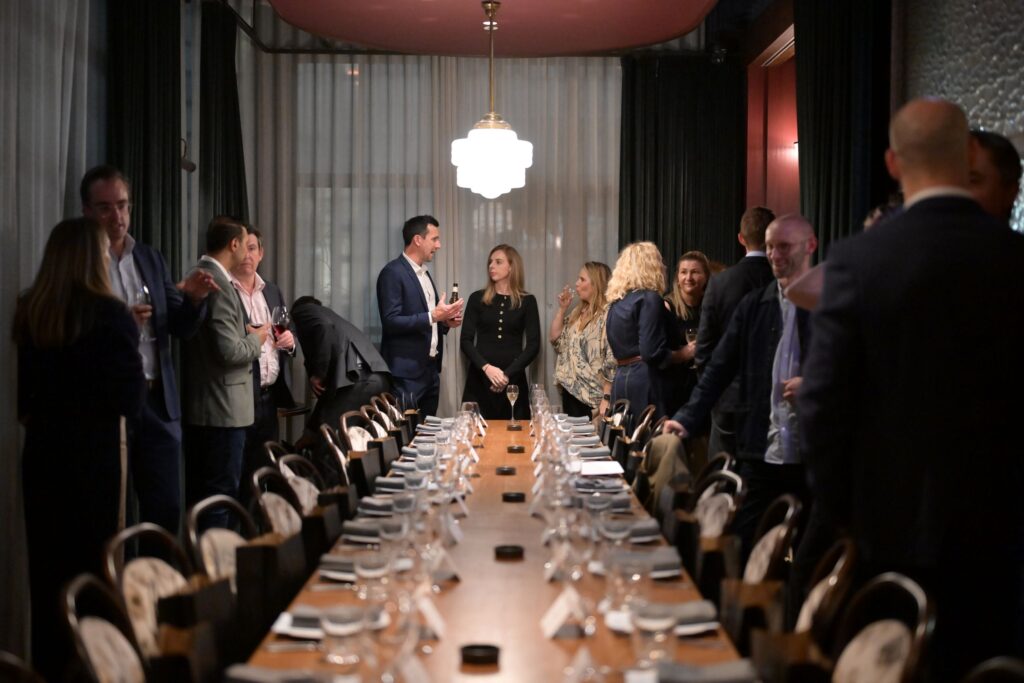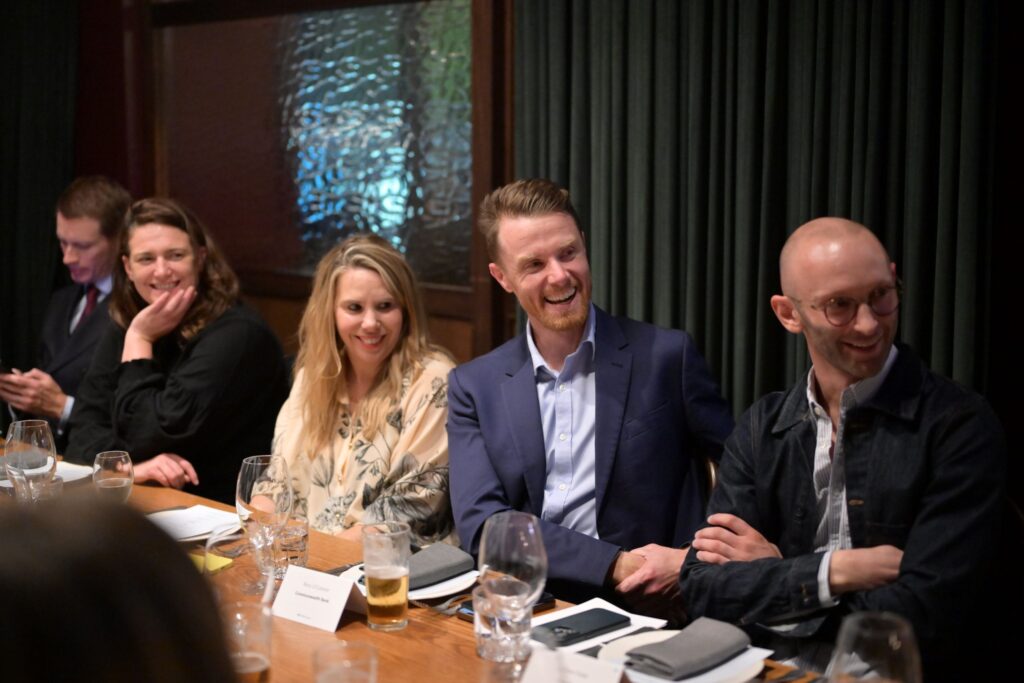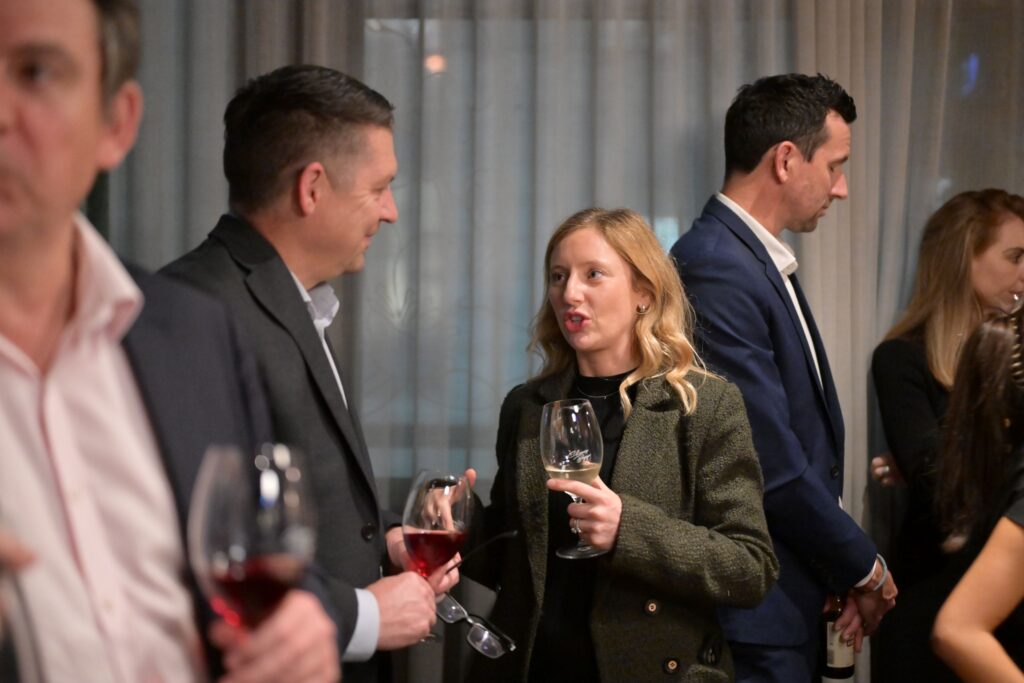Outrunning the Narrative: How AI-Powered Intelligence is Reshaping Influence in a Distrustful World
Introduction
The media landscape is undergoing a seismic shift, driven by AI, evolving consumer behaviors, and the erosion of trust in traditional institutions. To navigate the course of influence in an increasingly distrustful world, communication professionals must continue to innovate and evolve rapidly to maintain their competitive edge for the digital era.
This was the strategic context that drove discussions during the recent executive roundtable hosted by Meltwater, supported by Connect Media. Following the theme of How AI-Powered Intelligence is Reshaping Influence in a Distrustful World, the roundtable convened chief corporate affairs leaders to explore how brands can successfully adapt to remain influential in this rapidly changing environment. These discussions focused on three core pillars: The impact of AI and social media on communications strategies, the growing challenge of building trust amidst misinformation, and the future skills every leader will need to prepare for the next wave of disruption.
Conversations were led by David Hickey, Executive Director, APAC, Meltwater with exclusive insights from Oren Fixler, Head of Social, Content & Media Relations, Telstra and Gaven Morris, Executive GM, Corporate Affairs, Commonwealth Bank.

AI & The New Rules of Engagement: Rethinking Media in a Social-First World
The way audiences consume content has fundamentally evolved, with traditional media losing ground to social platforms, owned channels, and AI-driven discovery. Younger demographics now primarily engage with news and brand narratives through TikTok, Instagram, and other algorithmically curated feeds. According to the University of Canberra’s Digital News Report 2025, one in four Australians aged 18-24 watch news-related videos on TikTok, which equates to one in ten Australians nationally. This shift demands a channel-agnostic approach, where communications strategies prioritise audience behavior over legacy media relations.
As Oren Fixler, Head of Social, Content & Media Relations at Telstra shared during the roundtable, “For anyone under 45, their primary media consumption is through socials. We need to understand where our audience sit, how they’re consuming their content, and how we are going to move them.”
Telstra has firmly embraced this consumer evolution. By focusing on owned channels, the company found that its reputation impact doubled compared to earned media. This challenges the long-held belief that third-party validation is the gold standard for trust-building. Brands must act as publishers, crafting content that resonates within the platforms where audiences already spend their time. This also requires evaluating how content is truly moving the needle on brand reputation and how it translates to broader business metrics like customer loyalty.
AI plays a significant role in accelerating this trend by reshaping how content is discovered and consumed. Generative AI tools are increasingly serving as intermediaries between brands and audiences, summarising news and repackaging information in ways that bypass traditional media gatekeepers. This raises critical questions about how organisations can ensure their narratives remain visible and accurate across an AI-driven ecosystem.
To influence this new consumption cycle, brands must optimise content for AI discoverability, ensuring key messages are structured in ways that AI models can surface effectively. Integrating AI tools into content creation workflows can also enhance efficiency, from drafting press releases to testing headlines for engagement.
Brands that can establish direct, authentic relationships with their audiences through owned and social channels will ultimately hold a decisive competitive advantage for the future. Yet as AI continues to shape content consumption, leaders continue to face the stark reality of eroding trust in today’s fractured media landscape.
Trust in the Age of Disinformation: Measuring What Matters in Fractured Channels
Trust is no longer a byproduct of media coverage; it must be actively cultivated through transparency, consistency, and audience-centric engagement. As misinformation proliferates across digital channels, organisations face mounting pressure to establish themselves as credible sources.
Telstra’s approach to reputation measurement offers a clear blueprint for success. By embedding media intelligence and data insights into its broader engagement strategy, the company moved beyond vanity metrics to track how specific campaigns and channels have influenced trust and reputation.
“We’ve gotten to a point where we know our channels are more effective at shifting reputation and mindset than our earned channels”, Oren highlighted. “We see it every month in the data, it’s essentially doubled.”
This data-driven method revealed surprising insights, such as TikTok becoming Telstra’s highest-reputation touchpoint, demonstrating that unconventional platforms can outperform traditional media in building affinity.
Understanding audience segments is also critical. Commonwealth Bank emphasised the importance of financial literacy content that meets audiences where they are, rather than pushing promotional messaging. By focusing on helpful, non-transactional narratives, brands can foster deeper connections without overtly selling. Misinformation remains a pressing concern, particularly for regulated industries like banking and telecommunications. Proactive measures include monitoring emerging false narratives, collaborating with platforms to flag inaccuracies, and empowering spokespeople to respond swiftly during crises. Combating misinformation however also requires cross-functional alignment. Legal, marketing, and communications teams must work together to balance risk management with agile response strategies. In an era that continues to become ever more distrustful – authenticity and speed are paramount.


Future-Proofing Communications: Upskilling for an AI-Driven Workforce
The skills required for communications professionals are evolving just as rapidly as the media landscape. Proficiency in AI tools, data analytics, and digital content creation is no longer optional, but an essential driver for success. Telstra’s hiring strategy has illustrated this shift. By recruiting talent from unconventional backgrounds (such as gambling industry media buyers), the company infused its team with expertise in paid social and conversion optimisation – skills traditionally associated with marketing but increasingly vital for communications. Similarly, Commonwealth Bank has fully embraced a mindset of innovation through experimenting with AI responsibly, using tools like Microsoft Copilot while maintaining strict guardrails for sensitive information.
“A key challenge is helping teams envision what they’ve never seen,” Gaven Morris, Executive General Manager of Corporate Affairs at Commonwealth Bank, shared during the roundtable. “Our role is to paint that future state – to make the unimaginable tangible for the work ahead.”
Beyond technical skills, adaptability is the defining trait of future-ready corporate affairs professionals. The ability to anticipate trends, pivot strategies, and embrace new platforms will separate leaders from laggards. This demands a cultural shift within organisations: encouraging experimentation, tolerating calculated risks, and fostering continuous learning. AI’s role in communications will only continue to expand, from automating routine tasks to predicting reputation risks before they escalate. Teams that leverage these tools effectively will maintain a competitive edge in the future, but success will ultimately hinge on balancing automation with human judgment. The most impactful communicators will be those who interpret AI-generated insights and translate them into compelling narratives.
Conclusion
The future of influence belongs to those who adapt swiftly and can engage their audiences authentically. Traditional media relations alone are no longer sufficient. Brands must embrace a multi-channel, AI-centered approach that prioritises audience behavior over legacy practices, supported by platforms that enable real-time reputation monitoring and crisis prediction. Trust must be earned through data-driven strategies and proactive reputation management, while misinformation demands the vigilance and agility that only AI-powered intelligence can provide.
The path forward requires significant upskilling in digital and AI competencies, fostering cross-functional collaboration, and maintaining a relentless focus on audience needs. To outrun the narrative, corporate affairs leaders must pioneer the tools and strategies that define influence today. These insights represent more than observations – they’re a blueprint for competitiveness. Is your organisation prepared to lead the change?










